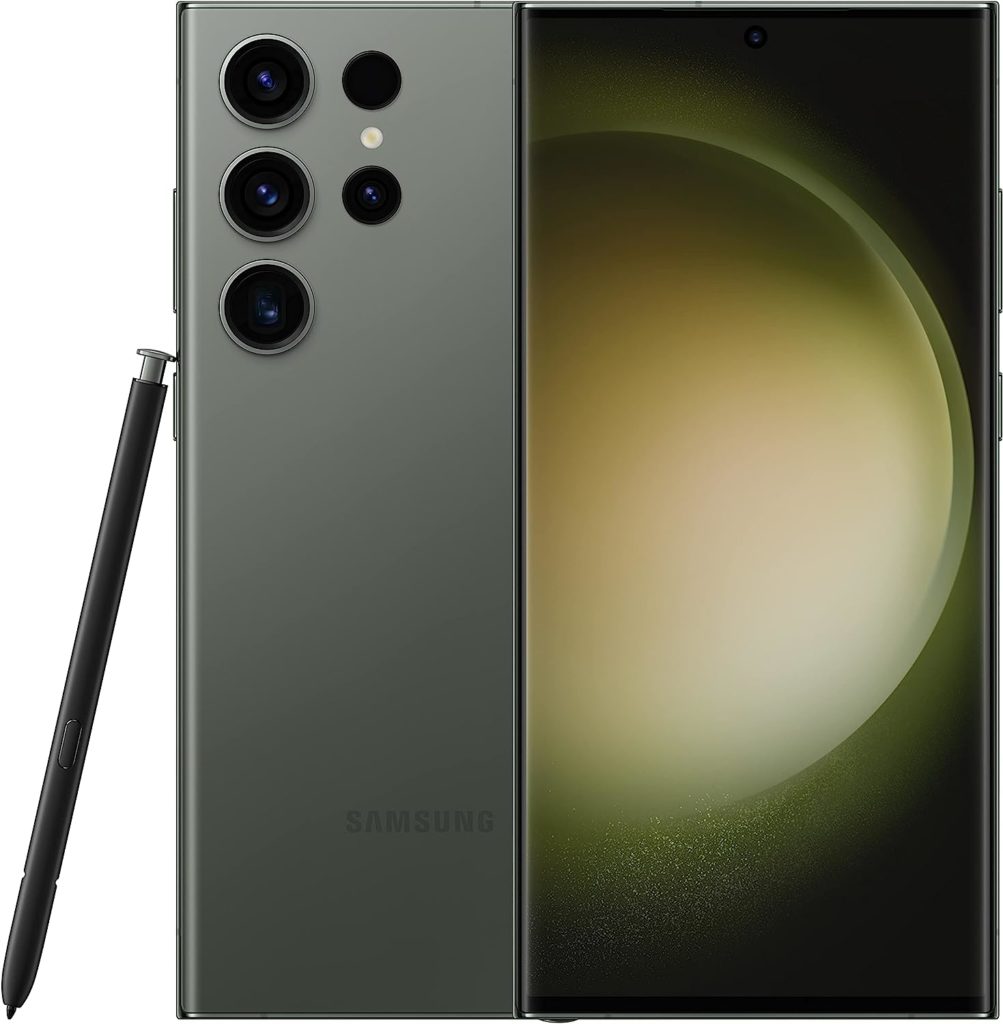Phones
Exploring the Best Phones with Altimeter Sensors

With the rapid evolution of technology, smartphones are constantly being enhanced with advanced features to improve the user experience. Among these innovative elements is the altimeter sensor. But what exactly is an altimeter sensor, and how does it benefit smartphone users? We’re going to unravel these queries in this comprehensive guide. (100 words)
An altimeter sensor is essentially a barometric sensor that measures atmospheric pressure. These sensors provide data that, when processed, can estimate the altitude or ‘height above sea level’ of a device. This feature has been gaining popularity among smartphone manufacturers, and consumers are starting to understand why it’s a must-have. Altimeter sensors in smartphones are often utilized in health and fitness applications, outdoor navigation, hiking apps, and even in some gaming applications. It’s not just a fancy addition; it’s an innovative tool that enhances a smartphone’s functionality, providing practical benefits for specific user needs.
Understanding the Technology Behind Altimeter Sensors
How Altimeter Sensors Work in Smartphones
An altimeter sensor in a smartphone works based on the principle of barometric pressure. The earth’s atmosphere exerts a pressure due to its weight, known as atmospheric or barometric pressure. This pressure decreases with increasing altitude. So, by measuring the atmospheric pressure, an altimeter sensor can estimate the altitude of the device.
The sensor itself consists of a sealed chamber, which changes shape with changes in atmospheric pressure. This change in shape can be measured and converted into an electrical signal, which a microprocessor can interpret to give an altitude reading. This interpretation often involves complex algorithms to account for factors like temperature, which can affect the pressure readings.
The Benefits of Altimeter Sensors
1. Fitness Tracking: Altimeter sensors are beneficial for fitness enthusiasts who enjoy outdoor activities such as hiking or mountain biking. These sensors can help track the number of stairs climbed or the elevation gained during a hike. Fitness tracking apps use this information to calculate the number of calories burned.
2. Navigation: When coupled with other sensors such as GPS, altimeter sensors can provide enhanced navigation capabilities. For example, while GPS can give horizontal positioning, altimeter sensors can offer vertical positioning, improving the accuracy of location data.
3. Gaming: Some innovative gaming apps utilize altimeter sensor data to create immersive experiences, enhancing realism in games that involve altitude changes.
Best Phones with Altimeter Sensors in 2023
Choosing a smartphone with an altimeter sensor requires not just an understanding of the sensor but also an analysis of the smartphone as a whole. The following are some top smartphones with inbuilt altimeter sensors.
Samsung Galaxy S23 Ultra
The Samsung Galaxy S23 Ultra is one of the latest flagship models from Samsung that boasts an altimeter sensor. Apart from its stunning design and powerful processor, it has a robust sensor suite, including the altimeter sensor. This sensor integrates seamlessly with the Samsung Health app, providing detailed tracking for outdoor activities. The high accuracy of the altimeter sensor in the Galaxy S23 Ultra makes it a top choice for fitness enthusiasts and adventure lovers.

iPhone 15 Pro Max
Apple has always been at the forefront of integrating advanced technology into its smartphones, and the iPhone 15 Pro Max is no exception. This model includes the altimeter sensor among its array of advanced features. Apple utilizes the sensor in its Health and Fitness apps, providing users with detailed information about their physical activities, such as stair-climbing count or hiking elevation gain. With its proprietary technology, Apple ensures precise readings, making the iPhone 15 Pro Max a favorite among users who depend on reliable altimeter data.

Google Pixel 7
Google’s Pixel 7 features an excellent altimeter sensor among its tech specs. Combined with Google Fit, the altimeter sensor helps users track their workouts, particularly when it comes to monitoring elevation changes during outdoor activities. As a plus, its Android OS allows for a broader range of third-party fitness and navigation apps that utilize the altimeter sensor, providing users with a variety of ways to use this feature.

How to Optimize the Use of Altimeter Sensors in Your Phone
Maximizing the benefits of an altimeter sensor in your smartphone involves understanding how to best utilize the data it provides.
General Tips
- Calibration: Like most sensors in your smartphone, the altimeter sensor needs occasional calibration for accurate results. Calibration can usually be done within the specific application you’re using that requires altimeter data.
- Software Updates: Ensure that your device is running the latest software updates. Updates often include improvements to the algorithms used by the altimeter sensor, which can enhance its accuracy.
- Third-Party Apps: If your device’s default apps don’t fully utilize the altimeter sensor, consider third-party applications. There are many fitness and navigation apps that utilize altimeter data to provide enhanced functionality.
Useful Apps
- Strava: A popular fitness app, Strava, can use the data from the altimeter sensor in your smartphone to provide more detailed statistics about your workouts.
- Google Earth: This application can use the altimeter data from your phone to provide a more immersive and accurate exploration experience.
- ViewRanger: A favorite among hikers, this app uses the altimeter sensor to provide detailed topographic maps and height information, enhancing outdoor navigation.

The Future of Altimeter Sensors in Smartphones
While the altimeter sensor has proven to be a practical tool in smartphones, it’s worth considering what lies ahead in this technological arena.
Predicted Developments
As technology continues to advance, we can expect to see even more accurate and efficient altimeter sensors. Enhanced calibration techniques and advanced algorithms could lead to better altitude estimation. Moreover, we may see altimeter sensors integrated into more applications, from fitness to gaming to virtual reality.
Impact on Users
As manufacturers continue to leverage this technology, users can expect to see an increase in the utility of their devices, particularly for those who regularly engage in outdoor activities or use applications requiring altitude data. The enhanced accuracy of these sensors will also improve the quality of data collected, benefiting users who depend on accurate data for fitness tracking or navigation.
Conclusion
As we’ve explored, the integration of altimeter sensors into smartphones has made significant strides in adding value to users’ experiences, particularly for outdoor enthusiasts and fitness lovers. The Samsung Galaxy S23 Ultra, iPhone 15 Pro Max, and Google Pixel 7 are all excellent choices if you’re looking for a smartphone with a reliable altimeter sensor.
Looking forward, we can anticipate further enhancements in altimeter sensor technology, contributing to the future evolution of smartphones. As users, understanding and utilizing this feature can allow us to get the most out of our devices, whether for health tracking, navigation, or merely enjoying an altitude-dependent mobile game.
-

 Gadgets6 months ago
Gadgets6 months agoCan Dogs Use VR Headsets?
-

 Tech6 months ago
Tech6 months agoWhat Does “Voicemail Pending” Mean?
-

 Phones5 months ago
Phones5 months agoHow Do I Know if My Phone Supports AR?
-

 Tech5 months ago
Tech5 months agoDoes Astigmatism Affect Your VR Experience?
-

 Business5 months ago
Business5 months agoHow Do You Make an AR Without Coding?
-

 Phones5 months ago
Phones5 months agoWhat To Do About That Weird Notification Sound on Android?
-

 Tech4 months ago
Tech4 months agoHow Can I Get Google Drive 1TB for Free?
-

 Phones4 months ago
Phones4 months agoHow Does SnapDrop Work? – Instant File Sharing Made Easy



















